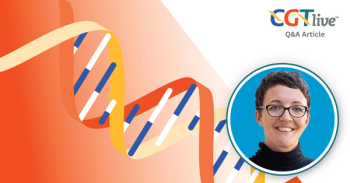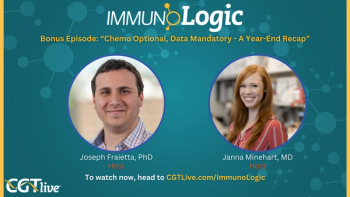
CAP-1002 Yields Significant Upper Limb Improvements in Non-Ambulatory Patients With Later Stage DMD
Data from the HOPE-2-OLE were presented in a late-breaking session at the 2023 MDA Conference.
Non-ambulatory patients with Duchenne muscular dystrophy (DMD) treated with the cardiosphere-derived allogeneic cell therapy CAP-1002 (Capricor Therapeutics) experienced slower progression of decline in Performance of Upper Limb (PUL), according to new data from the open-label extension (OLE; NCT04428476) of the phase 2 HOPE-2 trial (NCT03406780).
These data were presented in a late-breaking session by principal investigator Craig McDonald, MD, chair, department of physical medicine and rehabilitation, and profressor, department of pediatrics and physical medicine and rehabilitation, University of California at Davis, at the
“We've been excited that there's been results, from this trial and some other recent trials, there's an increased excitement and emphasis on doing clinical trials in this non-ambulatory population,” McDonald said during his presentation.
HOPE-2 assessed participants with a mean age of 14.3 years, all of which were on corticosteroids, and around 80% of which were non-ambulant. Participants were dosed with 150 million CAP-1002 cells intravenouslyevery 3 months.
WATCH NOW:
Preliminary results from the
The OLE is assessing CAP-1002 in 13 participants that received either treatment (n = 6) or placebo (n = 7) in HOPE-2, went through a gap phase of a mean 392 days, and were then treated in the OLE. The mean age was 13 years, all patients were non-ambulant, and all were on stable regimen corticosteroids. Patients maintained a treatment benefit for around 3.5 years, which suggests a disease modification effect. Notably, patients treated with placebo in HOPE-2 that had experienced a linear functional decline compared to treated participants experienced a slowing in disease progression to a rate nearly identical to patients previously treated with CAP-1002 in HOPE-2.
CAP-1002 is currently being evaluated in the randomized, blinded, and placebo-controlled phase 3 HOPE-3 trial (NCT05126758) that is enrolling up to 68 participants with DMD to receive 150 million cells every 3 months for a total of 4 doses. The trial is primarily assessing change in full PUL 2.20. Secondary outcome measures include changes in cardiac muscle function and structure by assessing left ventricular ejection fraction, left ventricular end-systolic volume, and left ventricular end-diastolic volume; other individual items in PUL; cardiac inflammation biomarkers; and other disease-modifying effects.
“To conclude, I think this is exciting. The patients on therapy experienced a slower progression of their upper limb deterioration, and this represents an urgency to initiate therapy, as loss of PUL points are never really recovered or regained. There's preserved cardiac function shown in the HOPE-2 trial. The safety profile has been reinforced in over 200 patients treated to date with infusions, and in the open label extension, patients continue to the state to receive CAP-1002. There's now a phase 3 HOPE-3 trial that is currently recruiting patients at multiple centers throughout the US. We don't really view this as an alternative to exon skipping or gene therapy, but I think there could be real potential synergy here with this and the other therapeutics that are emerging in DMD as well as steroids. So, there’s potential to be part of the cocktail treatment,” McDonald concluded his presentation.
REFERENCE
Marban L, McDonald CM, Hendrix S, et al. Late breaking: CAP-1002, an allogeneic cell therapy demonstrates disease modification in later-stage DMD patients: 18-month results from the HOPE-2-open label extens. Presented at: 2023 MDA Conference, March 19-22; Dallas, Texas. Poster #163
Newsletter
Stay at the forefront of cutting-edge science with CGT—your direct line to expert insights, breakthrough data, and real-time coverage of the latest advancements in cell and gene therapy.





































